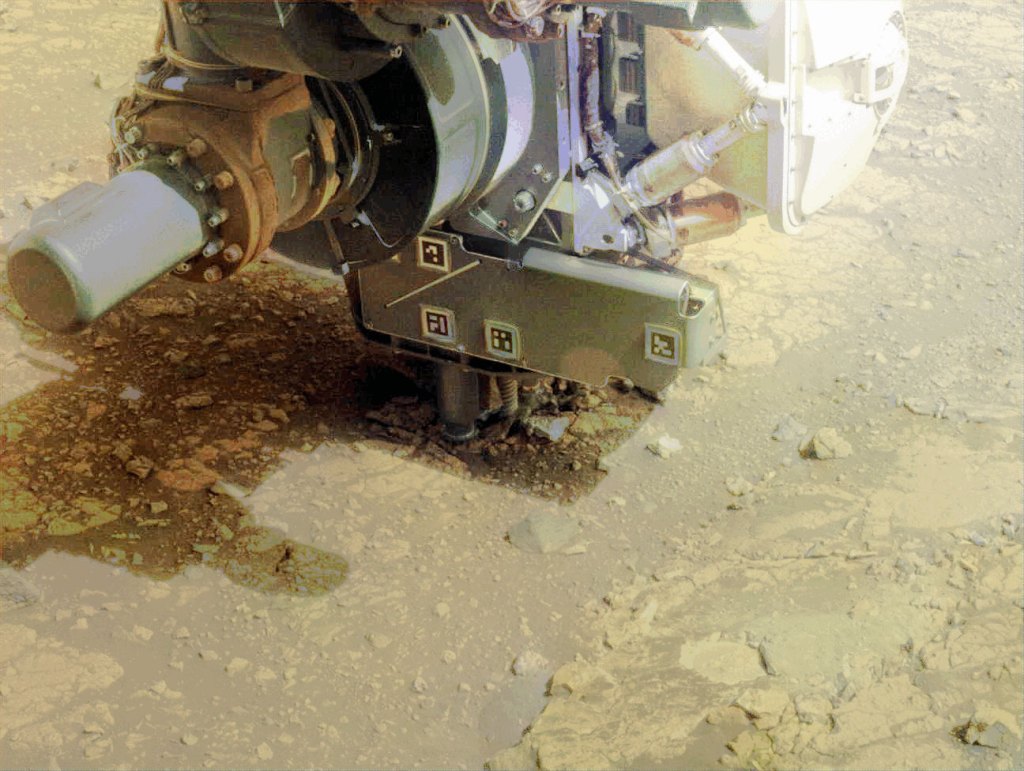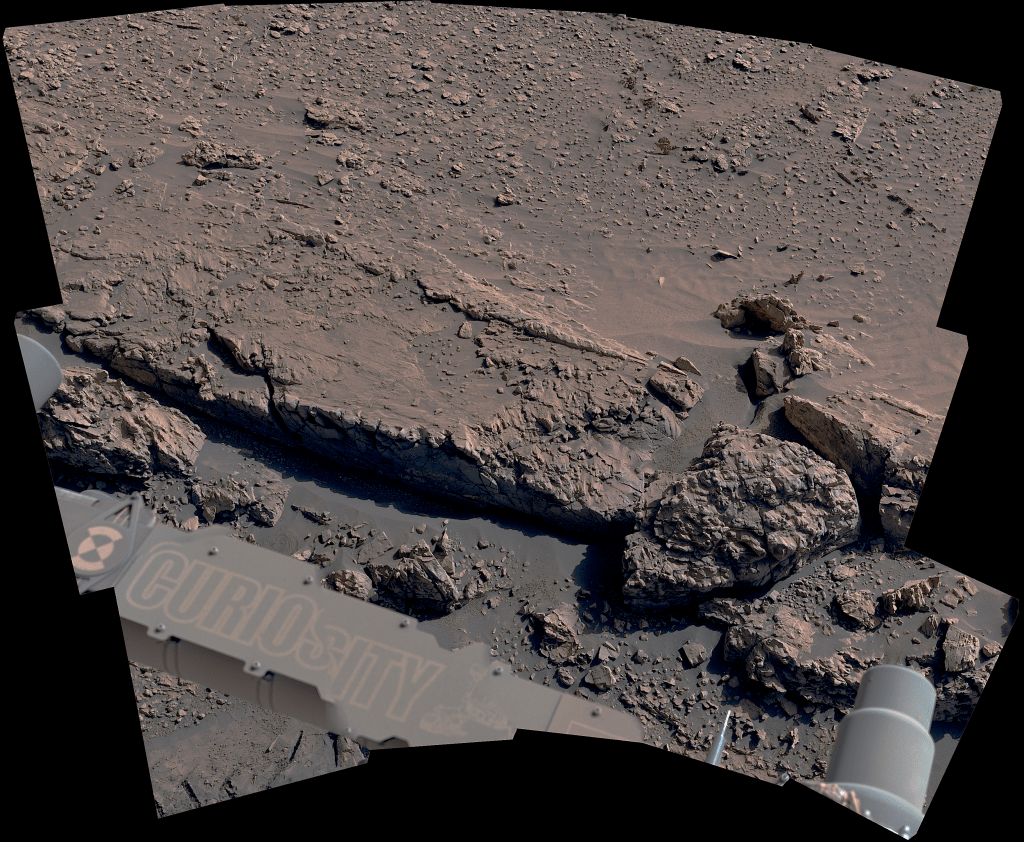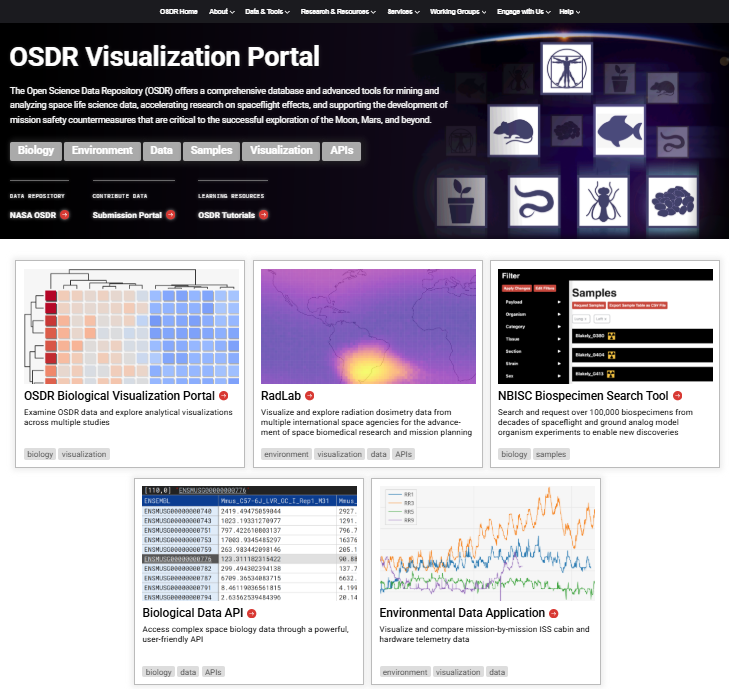Drilling begins tomorrow (sol 2170) on what will hopefully be our 18thsuccessful drill hole in Gale crater!
In our previous plan, we assessed the suitability of the Inverness target for drilling. We used APXS to determine if it fell within the required geochemical parameters, first brushing to remove excess dust and then using curium to irradiate the target and acquire whole-rock geochemical data. Curiosity also did a series of "stress tests" to test the integrity of the target, and check whether it would be strong enough to withstand our percussive drill technique without shattering. At the beginning of today's planning, we received data which confirmed that Inverness had passed our tests. Drilling begins tomorrow (sol 2170) on what will hopefully be our 18thsuccessful drill hole in Gale crater!
If successful, the resulting sample will be processed internally by CheMin (to assess mineralogical composition) and possibly SAM (to look for chemical signatures). The remaining collected drill sample will be dumped at a later date, so MAHLI will take imagery of potential dump locations on sol 2170 to help with later analysis. A pile of "tailings" will also be generated around the drill hole by the drilling activity. These tailings will be analyzed by ChemCam, APXS and MAHLI in the coming weeks - Mastcam will acquire images of the drill-hole and multispectral images on the tailings on sol 2171.
Today's 2-sol plan included three ChemCam LIBS targets on sol 2171 on an interesting network of veins and diagenetic features, revealed in the MAHLI image of the brushed Inverness target (shown above). "Pentland" (to the left of the image) consists of large veins. "Black Isle" is a grey, raised, nodular feature, in the right of the image, whilst "Grange" is a white patch, just below the brushed area. These targets will also help us look for variations across the Inverness block. All three targets will be imaged using Mastcam.
Although the plan is packed with drill related activities, we still fit in environmental monitoring activities, such as the Mastcam tau (to determine the amount of dust in the atmospheric column), standard DAN and REMS activities, and continuing Mastcam change detection of the targets Sandend and Skene (looking for evidence of grain movement, wind directions and strength).
Although drill campaigns can take up to two weeks to complete, we are starting to look ahead, thinking of our next potential drill site. Mastcam multispectral images taken on sol 2171 will be used to help us decide which direction to head in next!
Written by Catherine O'Connell
































